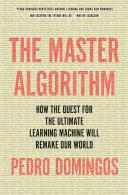Книга: The Master Algorithm: How the Quest for the Ultimate Learning Machine Will Remake Our World
Chapter Two
Chapter Two
The ferret brain rewiring experiments are described in “Visual behaviour mediated by retinal projections directed to the auditory pathway,” by Laurie von Melchner, Sarah Pallas, and Mriganka Sur (Nature, 2000). Ben Underwood’s story is told in “Seeing with sound,” by Joanna Moorhead (Guardian, 2007), and at www.benunderwood.com. Otto Creutzfeldt makes the case that the cortex is one algorithm in “Generality of the functional structure of the neocortex” (Naturwissenschaften, 1977), as does Vernon Mountcastle in “An organizing principle for cerebral function: The unit model and the distributed system,” in The Mindful Brain, edited by Gerald Edelman and Vernon Mountcastle (MIT Press, 1978). Gary Marcus, Adam Marblestone, and Tom Dean make the case against in “The atoms of neural computation” (Science, 2014).
“The unreasonable effectiveness of data,” by Alon Halevy, Peter Norvig, and Fernando Pereira (IEEE Intelligent Systems, 2009), argues for machine learning as the new discovery paradigm. Beno?t Mandelbrot explores the fractal geometry of nature in the eponymous book* (Freeman, 1982). James Gleick’s Chaos (Viking, 1987) discusses and depicts the Mandelbrot set. The Langlands program, a research effort that seeks to unify different subfields of mathematics, is described in Love and Math, by Edward Frenkel (Basic Books, 2014). The Golden Ticket, by Lance Fortnow (Princeton University Press, 2013), is an introduction to NP-completeness and the P = NP problem. The Annotated Turing,* by Charles Petzold (Wiley, 2008), explains Turing machines by revisiting Turing’s original paper on them.
The Cyc project is described in “Cyc: Toward programs with common sense,”* by Douglas Lenat et al. (Communications of the ACM, 1990). Peter Norvig discusses Noam Chomsky’s criticisms of statistical learning in “On Chomsky and the two cultures of statistical learning” (http://norvig.com/chomsky.html). Jerry Fodor’s The Modularity of Mind (MIT Press, 1983) summarizes his views on how the mind works. “What big data will never explain,” by Leon Wieseltier (New Republic, 2013), and “Pundits, stop sounding ignorant about data,” by Andrew McAfee (Harvard Business Review, 2013), give a flavor of the controversy surrounding what big data can and can’t do. Daniel Kahneman explains why algorithms often beat intuitions in Chapter 21 of Thinking, Fast and Slow (Farrar, Straus and Giroux, 2011). David Patterson makes the case for the role of computing and data in the fight against cancer in “Computer scientists may have what it takes to help cure cancer” (New York Times, 2011).
More on the various tribes’ paths to the Master Algorithm in the corresponding sections below.
- CHAPTER 2 Fedora Quick Start
- CHAPTER 14 Networking
- Chapter 11. IP Masquerade and Network Address Translation
- Chapter 12. Important Network Features
- Chapter 13. The Network Information System
- Chapter 14. The Network File System
- CHAPTER 10: Administering network printers and print services
- CHAPTER TWO: The Master Algorithm
- Chapter 3: Creating and Managing Virtual Networks
- Chapter 1. Introduction to Networking
- Chapter 3 Creating and Managing Virtual Networks
- Chapter 4. Network Address Translation Introduction




